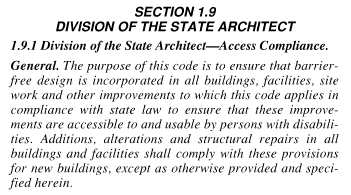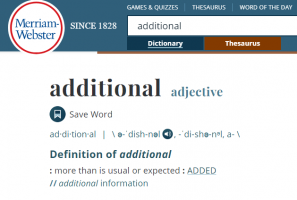Yikes
SAWHORSE
Check out CBC Chapter 1, Section 1.9, referenced in 11B-101.1
Also check out that link I posted earlier if you haven't already, specifically there's a link on that page that takes you here:
Access Compliance Reference Materials
www.dgs.ca.gov

The last sentence does NOT say: "All buildings and facilities in which additions, alterations and structural repairs occur shall comply with these provisions for new buildings except as otherwise provided and specified herein."
As written in 1.9, the subject of the sentence in the code is: additions, alterations, and structural locations.
The modifier is the location/instances where these additions, alterations and structural repairs locations occur: "in all buildings and facilities" (e.g. public buildings, private buildings, public housing as further described in 1.9.1.1, 1.9.1.2, 1.9.1.3).
The buildings and facilities are not the subject of the sentence that compels compliance; the additions, alterations and repairs inside the buildings are the subject.
To be clear, the area of my $2 million interior alteration would comply with the provisions for new buildings. And any 202.4 path-of-travel improvements triggered by the alteration would also comply with the provisions for new buildings.
But the exterior parking lot is not part of my interior alteration scope, and the 5 required path-of travel improvements triggered by alterations in 202.4 do not mention or include parking.
Since the existing parking lot is neither an addition nor an alteration nor a structural repair, I don't see how 1.9.1 triggers its compliance.
Last edited:

